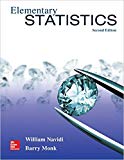
Concept explainers
To find: The
Answer to Problem 2CS
The
Explanation of Solution
Given information:
The number of pollutants is
| Year 1 | Year 2 | ||||||
| PM | OC | TC | LE | PM | OC | TC | LE |
| 21.7 | 15.6 | 17.73 | 1.78 | 27.0 | 15.79 | 19.46 | 2.06 |
| 27.8 | 15.6 | 17.87 | 2.25 | 24.7 | 13.61 | 15.98 | 3.10 |
| 24.7 | 17.2 | 18.75 | 1.98 | 21.8 | 12.94 | 15.79 | 2.68 |
| 15.3 | 8.3 | 9.21 | 0.67 | 23.2 | 12.97 | 16.32 | 2.80 |
| 18.4 | 11.3 | 12.46 | 0.86 | 23.3 | I l.19 | 13.49 | 2.07 |
| 14.4 | 8.4 | 9.66 | 1.93 | 16.2 | 9.61 | 12.44 | 2.14 |
| 19.0 | 13.2 | 14.73 | 1.51 | 13.4 | 6.97 | 8.40 | 2.32 |
| 23.7 | 1 1.4 | 13.23 | 1.98 | 13.0 | 7.96 | 10.02 | 2. 18 |
| 22.4 | 13.8 | 17.08 | 1.69 | 16.9 | 8.43 | 11.08 | 2.06 |
| 25.6 | 13.2 | 15.86 | 2.30 | 26.3 | 14.92 | 21.46 | 1.94 |
| 15.0 | 15.7 | 17.27 | 1.24 | 31.4 | 17.15 | 20.57 | 1.85 |
| 17.0 | 9.3 | 10.2 1 | 1.44 | 40. l | 15.13 | 19.64 | 2. 1 1 |
| 23.2 | 10.5 | 11.47 | 1.43 | 28.0 | 8.66 | 10.75 | 2.50 |
| 17.7 | 14.2 | 15.64 | 1.07 | 4.2 | 15.95 | 20.36 | 2.27 |
| 11.l | 11.6 | 13.48 | 0.59 | 15.9 | 11.73 | 14.59 | 2.17 |
| 29.8 | 7.0 | 7.795 | 2.10 | 20.5 | 14.34 | 17.64 | 2.74 |
| 20.0 | 19.9 | 21.20 | 1.73 | 23.8 | 8.99 | 1 1.75 | 2.45 |
| 21.6 | 14.8 | 15.65 | 1.56 | 14.6 | 10.63 | 13.12 | |
| 14.8 | 12.6 | 13.51 | 1.1 | 17.8 | |||
| 21.0 | 9.1 | 9.94 | |||||
Concept used:
MINITAB is used.
Calculation:
The

Figure-1
The
The

Figure-2
The
The

Figure-3
The
The

Figure-4
The
Therefore, the
Want to see more full solutions like this?
Chapter 8 Solutions
Elementary Statistics 2nd Edition
- Business Discussarrow_forwardThe following data represent total ventilation measured in liters of air per minute per square meter of body area for two independent (and randomly chosen) samples. Analyze these data using the appropriate non-parametric hypothesis testarrow_forwardeach column represents before & after measurements on the same individual. Analyze with the appropriate non-parametric hypothesis test for a paired design.arrow_forward
- Should you be confident in applying your regression equation to estimate the heart rate of a python at 35°C? Why or why not?arrow_forwardGiven your fitted regression line, what would be the residual for snake #5 (10 C)?arrow_forwardCalculate the 95% confidence interval around your estimate of r using Fisher’s z-transformation. In your final answer, make sure to back-transform to the original units.arrow_forward
 Glencoe Algebra 1, Student Edition, 9780079039897...AlgebraISBN:9780079039897Author:CarterPublisher:McGraw Hill
Glencoe Algebra 1, Student Edition, 9780079039897...AlgebraISBN:9780079039897Author:CarterPublisher:McGraw Hill Big Ideas Math A Bridge To Success Algebra 1: Stu...AlgebraISBN:9781680331141Author:HOUGHTON MIFFLIN HARCOURTPublisher:Houghton Mifflin Harcourt
Big Ideas Math A Bridge To Success Algebra 1: Stu...AlgebraISBN:9781680331141Author:HOUGHTON MIFFLIN HARCOURTPublisher:Houghton Mifflin Harcourt Holt Mcdougal Larson Pre-algebra: Student Edition...AlgebraISBN:9780547587776Author:HOLT MCDOUGALPublisher:HOLT MCDOUGAL
Holt Mcdougal Larson Pre-algebra: Student Edition...AlgebraISBN:9780547587776Author:HOLT MCDOUGALPublisher:HOLT MCDOUGAL College Algebra (MindTap Course List)AlgebraISBN:9781305652231Author:R. David Gustafson, Jeff HughesPublisher:Cengage Learning
College Algebra (MindTap Course List)AlgebraISBN:9781305652231Author:R. David Gustafson, Jeff HughesPublisher:Cengage Learning



